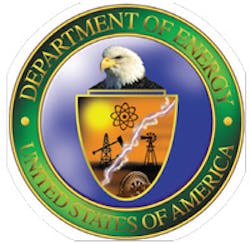Passage of Proposed Water-Energy Nexus Bill Still Looks Promising
By Patrick Crow, Washington Correspondent
The relationship between water and energy is receiving more attention from the federal government. Last January, Sens. Lisa Murkowski (R-Alaska) and Ron Wyden (D-Ore.) filed a bill (S.1971) to improve cooperation between the Energy and Interior Departments on the energy-water nexus. That term was defined as the link between energy efficiency and the quantity of water needed to produce fuels and energy, plus the quantity of energy needed to transport, reclaim and treat water.
"Recent developments have focused national attention on these connections. When severe drought affected more than a third of the United States in 2012, limited water availability constrained the operation of some power plants and other energy production activities. Hurricane Sandy demonstrated the compounding ramifications of vital water infrastructure losing power. The recent boom in domestic unconventional oil and gas development has added complexity to the national dialogue on the relationship between energy and water resources."
Accordingly, the DOE pledged to work with interested parties, including other federal agencies, to collaborate on research, development and deployment of key technologies.
Last May, Murkowski, who is the top Republican on the Senate Energy and Natural Resources Committee, said her legislation would codify that effort. She said the bill would facilitate the exchange of information on the energy-water nexus and help parties adopt better practices through technological innovations.
She explained that 41 percent of the freshwater withdrawals in the U.S. are attributed to cooling the vast majority of our power plants, which also consume roughly 6 percent of the nation's fresh water.
"Water is routinely needed to produce the various energy resources we rely upon, such as oil, gas, coal, uranium, and biofuels," said Murkowski. "In fact, more than 12 billion gallons of fresh water are consumed daily for the combined production of fuels and electricity across the country."
Murkowski said the other end of the spectrum is the energy consumed to meet U.S. water needs, or
"energy-in-water." She said that, according to the latest available data, some 410 billion gallons of water are being treated and transported across the U.S. on a daily basis. This effort requires energy -- most of which is in the form of electricity.
She said a study has found that direct water-related energy consumption was more than 12 percent of national primary energy consumption in 2010, equal to the annual energy consumption of 40 million Americans.
At a Senate Water and Power Subcommittee hearing on the legislation in June, witnesses of the Obama Administration supported the concept of improving energy-
water research but withheld their support on the bill itself.
Jonathan Pershing, principal deputy director of the DOE's Office of Energy Policy and Systems Analysis, explained that the Administration had concerns regarding the details of the collaborative structure and reporting provisions on issues related to the nexus of energy and water.
Nicole Carter, a natural resources policy specialist with the Congressional Research Service, raised other issues. She said it would be difficult to manage an energy-water nexus budget cutting across several federal departments and noted that the bill does not clarify whether funding will be limited to research, development and demonstration or will include infrastructure and other larger-scale investments.
The Alliance for Water Efficiency said passage of the bill would be a critically important step in promoting better joint management of the nation's energy and water resources.
Mary Ann Dickinson, president and CEO of the Alliance, said that since it was founded seven years ago, her group has been interested in the relationship between water and energy. In 2010, along with the American Council for an Energy Efficient Economy, it issued a report with recommendations for national and state action in the areas of energy-water policy, standards and codes, programs, and research.
"Of particular importance is that we accurately determine on a national basis how much water is needed (embedded) in the generation of electricity and how much energy is needed or embedded in drinking water pumping and treatment as well as wastewater treatment," Dickinson said. "With a fuller understanding of this significant relationship, federal policies and funding programs can be developed, which will cost‐effectively and collectively save the most amount of energy and water."
An energy committee spokesperson said that the full committee has not scheduled action on the bill. Prospects for passage this session seemed promising however, since Chairman Mary Landrieu (D-La.) recently announced her support.
About the Author: Patrick Crow covered the U.S. Congress and federal agencies for 21 years as a reporter for industry magazines. He has reported on water issues for the past 15 years. Crow is now a Houston, Texas-based freelance writer.

